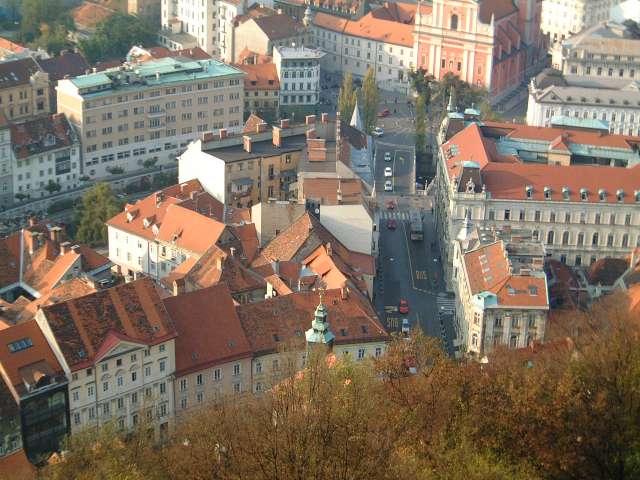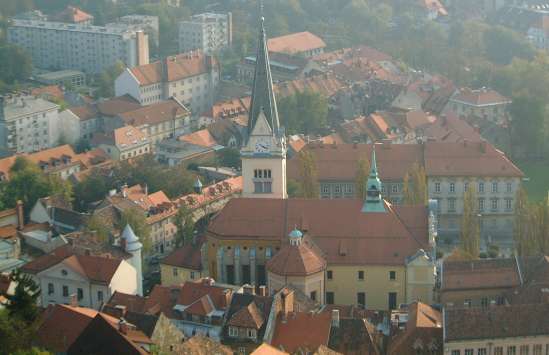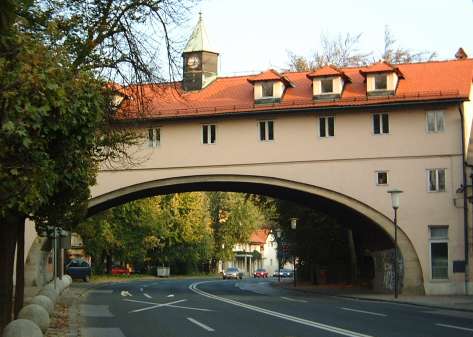Ljubljana, October 2001
From the train, Slovenia looked pleasantly rural, with
lots of hills and woodland - possibly good walking country.
It also looked clean and prosperous. According to
"The Economist", Slovenia in 2001 met the economic
criteria for EU membership better than some then-current
members (it became a member in 2004).
Ljubljana itself also seemed clean (fewer graffiti than
Zurich) and economically successful, though with
some hangovers from the days when it was part of
a planned economy. There seems to be a shortage of
hotels - we had no real difficulty in finding a room,
but in mid-October, we expected more choice than we
actually had.
The most prominent tourist attraction is Ljubljana
Castle, on a hill overlooking the old town. Over the
years, however, this has been blown up, converted
into flats, and (probably most destructive of all)
enthusiastically "restored". It's difficult to say
which, if any, of the current walls was originally part
of a real castle. I decided the castle itself was not worth
a photograph, but it does make a good vantage point
for taking pictures of the rest of Ljubljana.
Here are two:


I thought this bridge was worth a picture; at the time, I knew
nothing whatsoever about it. The picture is taken looking away from the centre
of Ljubljana.

A resident of Ljubljana, Amadej Trnkoczy, later explained to me in
an email how this extraordinary building came to be the way it
is, as follows:
" It was in sixties of the last century. Slovenia, a part of Yugoslavia was a socialistic country and progress was significantly
differently defined than today or before socialistic era. Everything old was not desired, and progress meant literally industry,
traffic and production of material goods.
So people (read a few key guys in power) decided to make a broad road right in the middle of the upper part of medieval
Ljubljana by tearing down many 300 plus years old small houses and destroying most of historical and architectural value
of this part of the town, including significant architectural landmark of Shentjakobski Trg place.
There was a strong opposition to these plans among professional architects, historians, and conservationists.
However, socialism never erred, so it was impossible to give up. The result was a 'compromise'.
The key building (on your picture) was not torn down but the new road was built no matter what. And that is what you see today."


